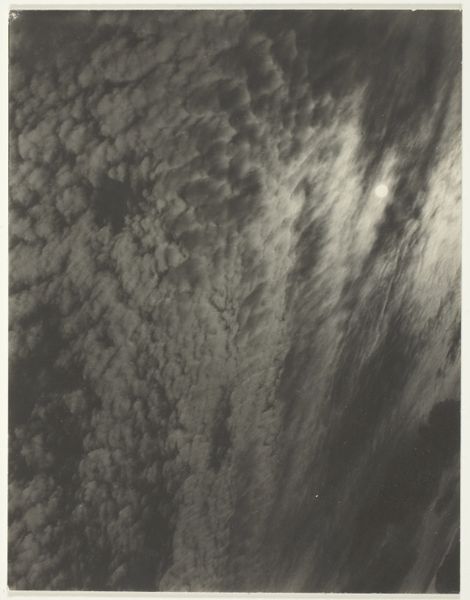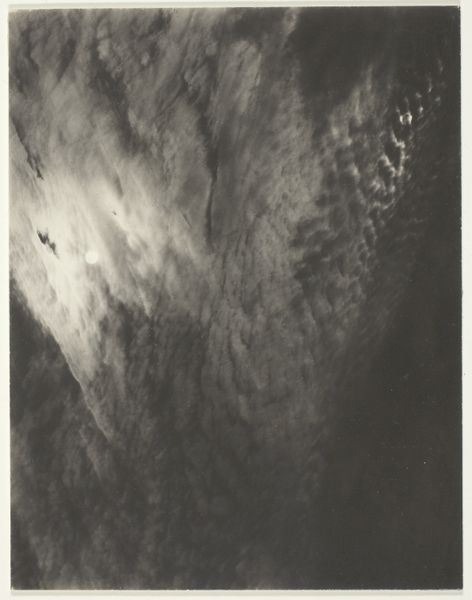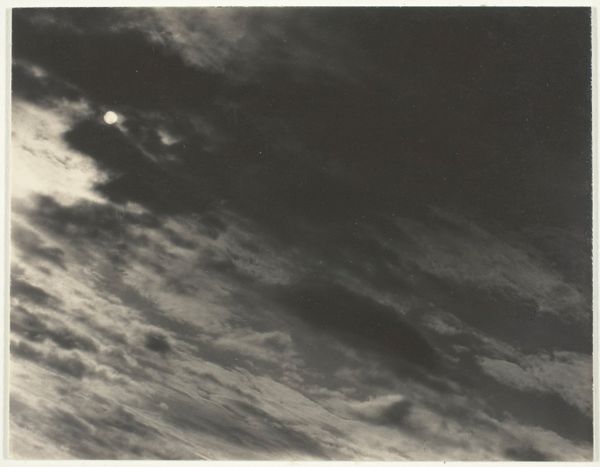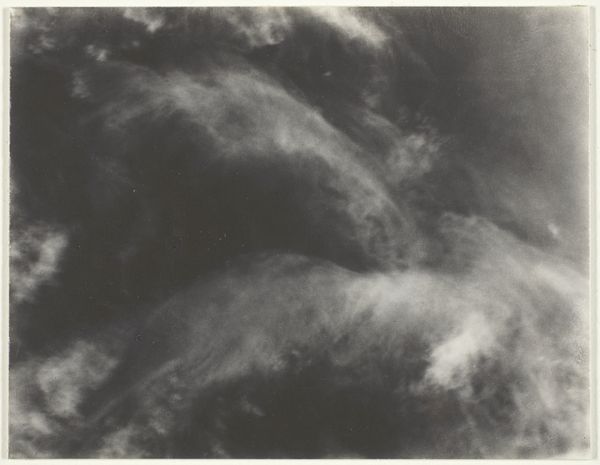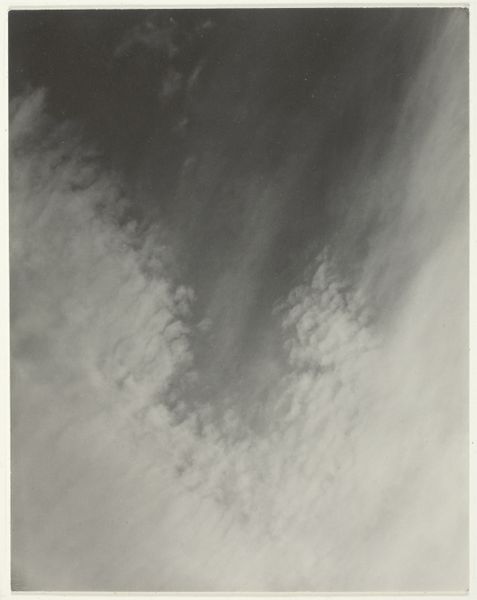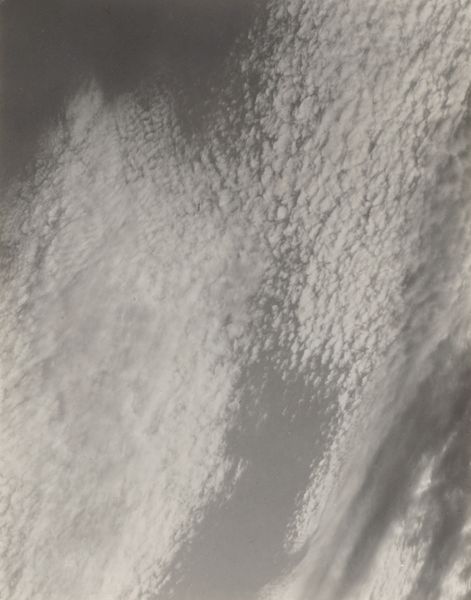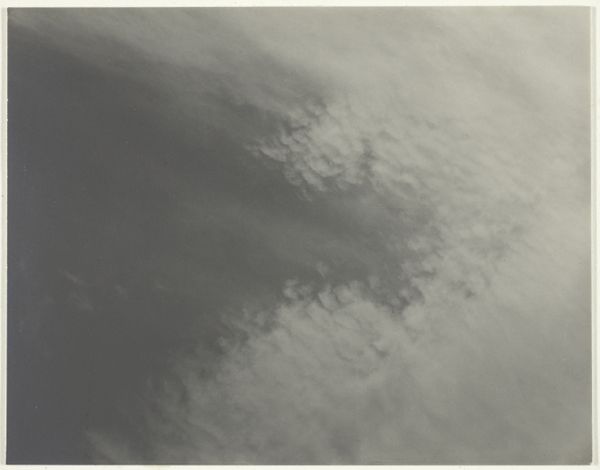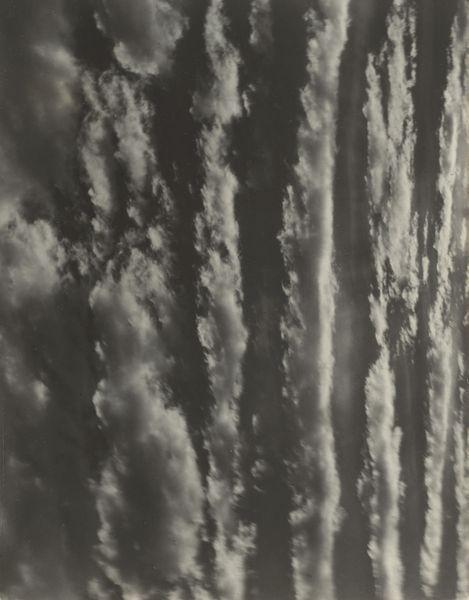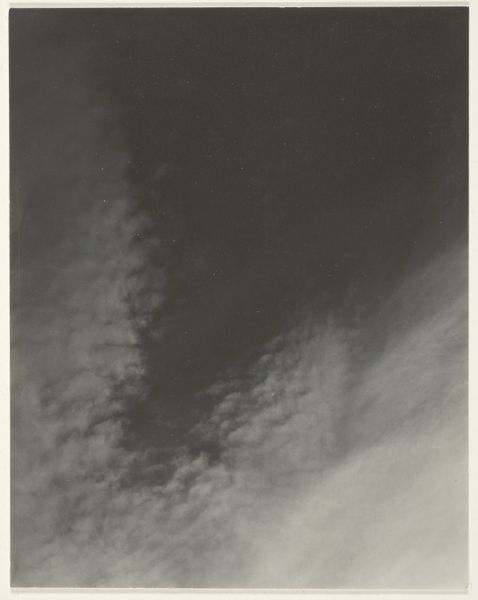
Dimensions: 9.1 × 11.8 cm (image/paper/first mount); 35 × 27.6 cm (second mount)
Copyright: Public Domain
Editor: We're looking at Alfred Stieglitz's photograph, "Equivalent, from Set A (Third Set, Print 5)" from 1929, a gelatin silver print. It's essentially an image of clouds, but the stark contrasts give it such a dramatic feel. What do you make of it? Curator: This image speaks volumes about Stieglitz's exploration of photography as a means of conveying inner emotional states, particularly as a response to the changing social landscape of the early 20th century. What appears simply as a photograph of clouds becomes a powerful symbol. Consider the socio-political context of the late 1920s: disillusionment after World War I, rising industrialization, and shifting gender roles. How might these "equivalents" function as a visual language for those unspoken anxieties and desires? Editor: So, it's less about the clouds themselves and more about what they represent? Curator: Precisely. Think about Stieglitz's own relationship with Georgia O'Keeffe. These photographs were created during a time of intense personal and artistic exploration. The cloud formations can be interpreted as visual metaphors for the complexities of their relationship, for female sexuality, and for a search for spiritual transcendence amidst a rapidly modernizing world. They allow for multiple readings depending on one’s own positionality and lived experiences. Do you think it engages viewers to do so today? Editor: Definitely! Knowing the context adds layers to the image, prompting deeper reflection. Curator: It makes us consider how abstraction can be a potent tool for political expression, allowing artists to skirt censorship and communicate complex ideas through subtle visual cues. This connects to feminist theories around the body, visibility, and the power of the gaze. Editor: That's given me so much to think about – it transforms the artwork entirely! Curator: Indeed. It reminds us that art is not created in a vacuum. It's a product of its time, shaped by societal forces and individual experiences.
Comments
No comments
Be the first to comment and join the conversation on the ultimate creative platform.
